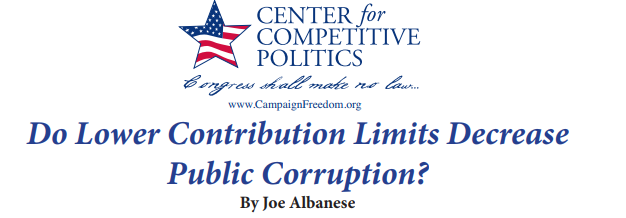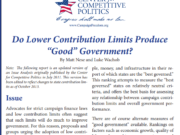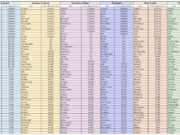Note: This report is an updated version of an Issue Analysis originally published by the Center for Competitive Politics in January 2009. This version has been edited to reflect contribution limits from the 2011-2012 election cycle and corruption data, from 2001-2010.
Advocates of campaign finance regulation often claim that contributions to political candidates must be limited to guard against corruption. They argue that as contributions increase, so too does corruption among public officials. In 2013, The New York Times Editorial Board described contribution limits as “an essential tool in combating the corrupting effects of money in politics.”
Regardless of its merits, this reasoning has apparently been persuasive; most states have restrictions that limit how much citizens can give to support the candidates of their choice. These limits vary widely, remaining unlimited in twelve states while being set as low as $160 per election to candidates for State House and State Senate in Montana. The majority of states have campaign contribution limits somewhere in between these extremes.
If contribution limits effectively guard against public corruption, we would expect to see states with low campaign contribution limits experiencing lower rates of public corruption than states with no or high limits. This analysis of contribution limits and corruption rates in all 50 states seeks to determine if lower contribution limits are in fact an effective way of reducing or minimizing public corruption.
The analysis ultimately concludes that there appears to be no relationship between a state’s contribution limits and its corruption rate.
https://ifs-site.mysitebuild.com/wp-content/uploads/2013/08/2013-08-01_Issue-Analysis-5_Do-Lower-Contribution-Limits-Decrease-Public-Corruption1.pdf














